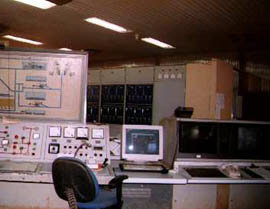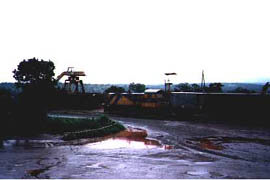 METALLURGY METALLURGY
 THE FIRST ALUMINA PLANT IN AFRICA THE FIRST ALUMINA PLANT IN AFRICA
Guinea barely accounts for any of the transformation industry, but Friguia is the exception. It started operations in 1960, and has not stopped working ever since, becoming one of the motors of the country’s economy. Friguia produces and exports alumina, the first transformation step in producing aluminum.

Friguia has undergone an important restructuring process that is still unfinished. This process reflects the transformation the entire mining industry of Guinea is going through in order to become more competitive in the international arena. The two major shareholders (the state with 49% and the private consortium with 51%) will basically disappear. After a number of transformations through the years, the government will finally reduce its shares to 15% and the individual partners now forming the FRIALCO consortium - Péchiney (Fr), Alcan (Can), Noranda (USA) and Norsk Hydro (Norw) will be able to invest directly into the company if they decide to do so, and there will be place for new investors if they decide to come.
|
Mr. Leonard Jacob, who has just been confirmed in his position as General Manager, explains that the aluminum industry has developed tremendously in the last 40 years, and competitor countries such as Jamaica, Australia and Brazil have heavily invested in the size and technology of their plants.

For instance, the average production of an alumina plant today is 1,3 million tons/year, whereas Friguia only produces half of that. Friguia’s plant is old and needs constant upkeep and attention. Therefore a heavy investment program needs to be implemented.
Plans for the future seem bright. The objective is to double the plant’s capacity to 1,3 million tons/year. Exports are already been done to Cameroon, and links are being developed with Nigeria. Ghana is their next target. Besides, partners offer a guaranteed market for their own factories, Friguia’s plant is close to the coast, and Guinea is nearer to European smelters than most competitor countries. On top of that they are trying to develop a low iron alumina which could be very useful for some high purity metal producers. So Friguia does have a few advantages going for them. Now it is a question of time and money. |

